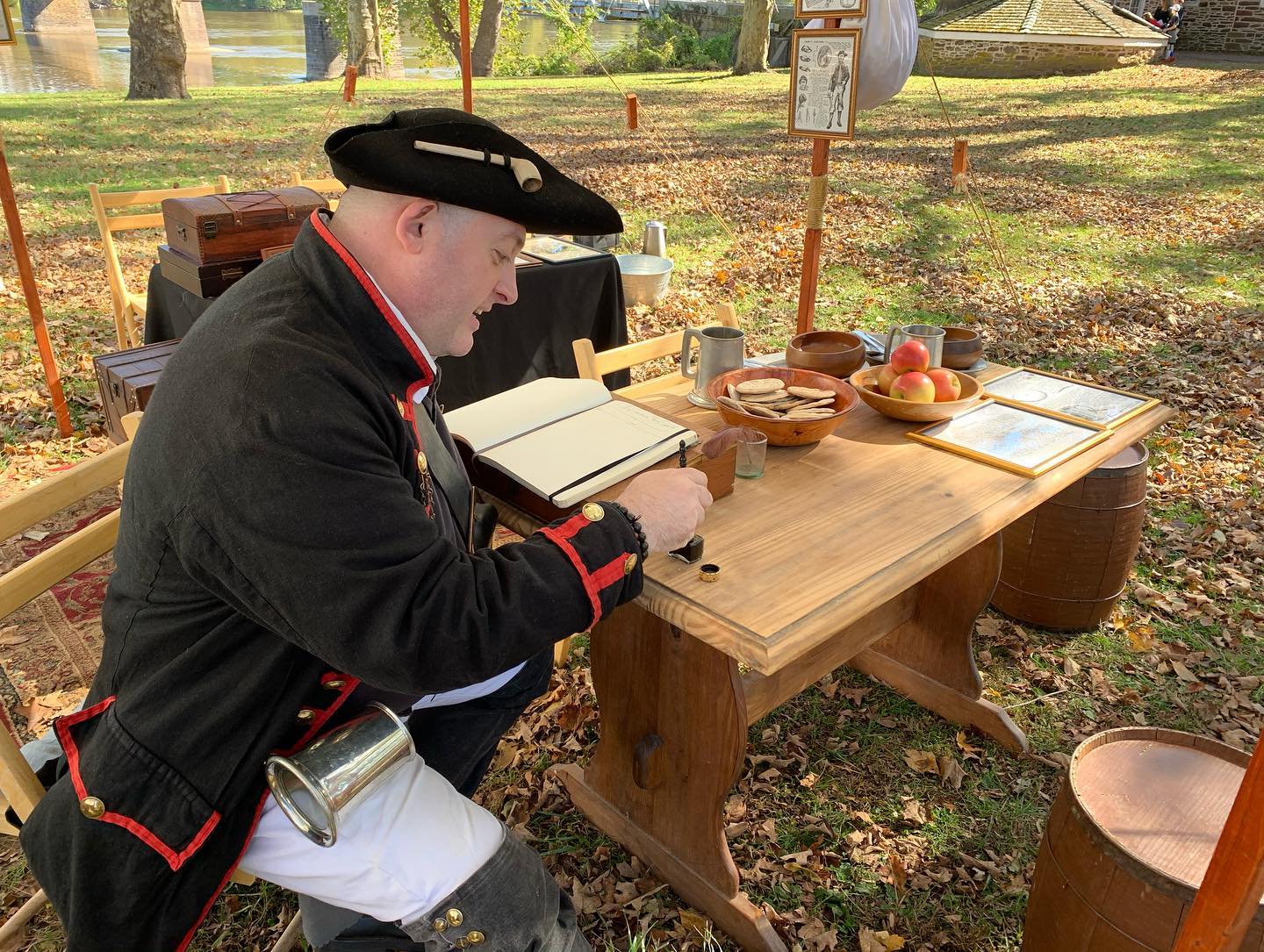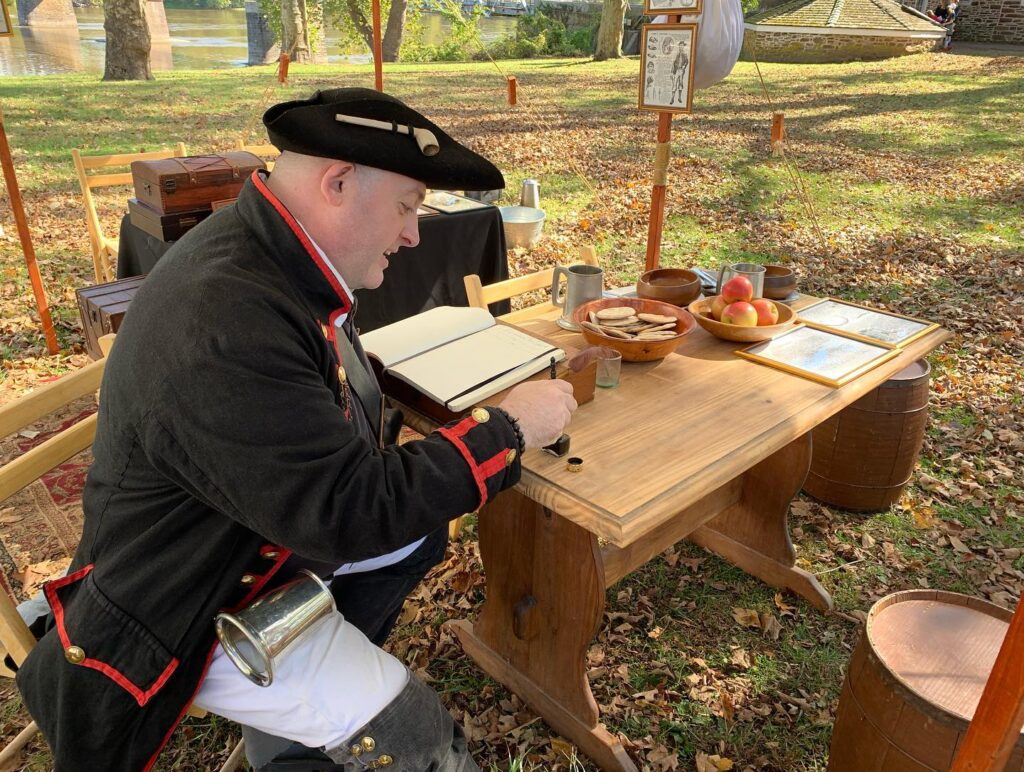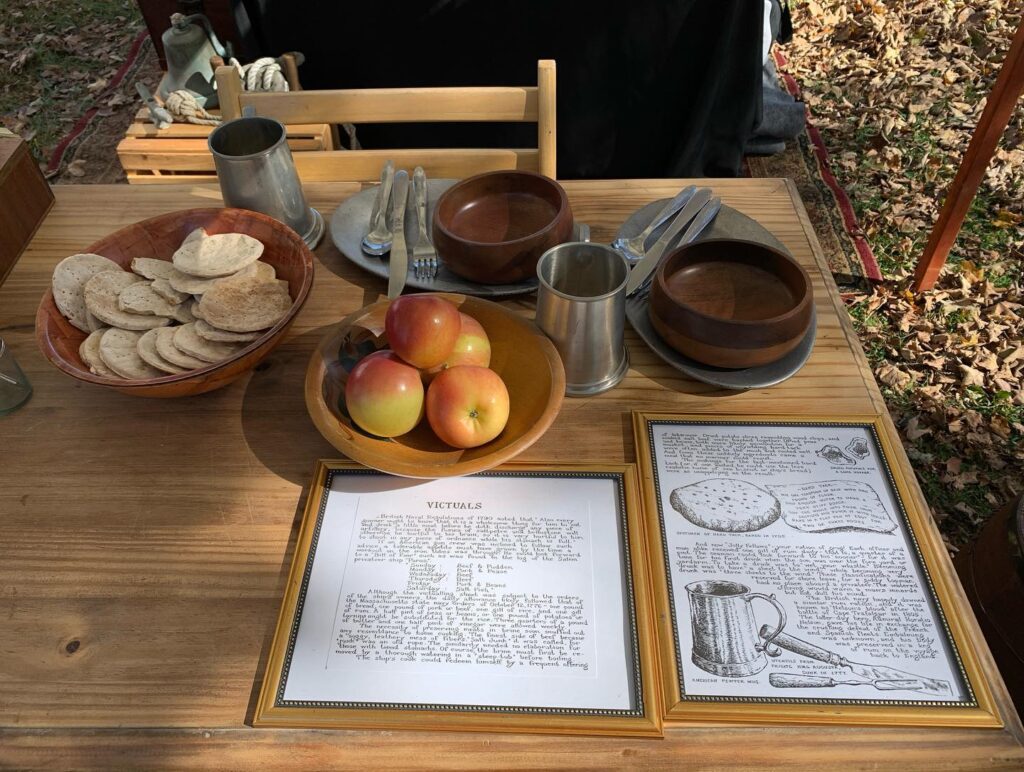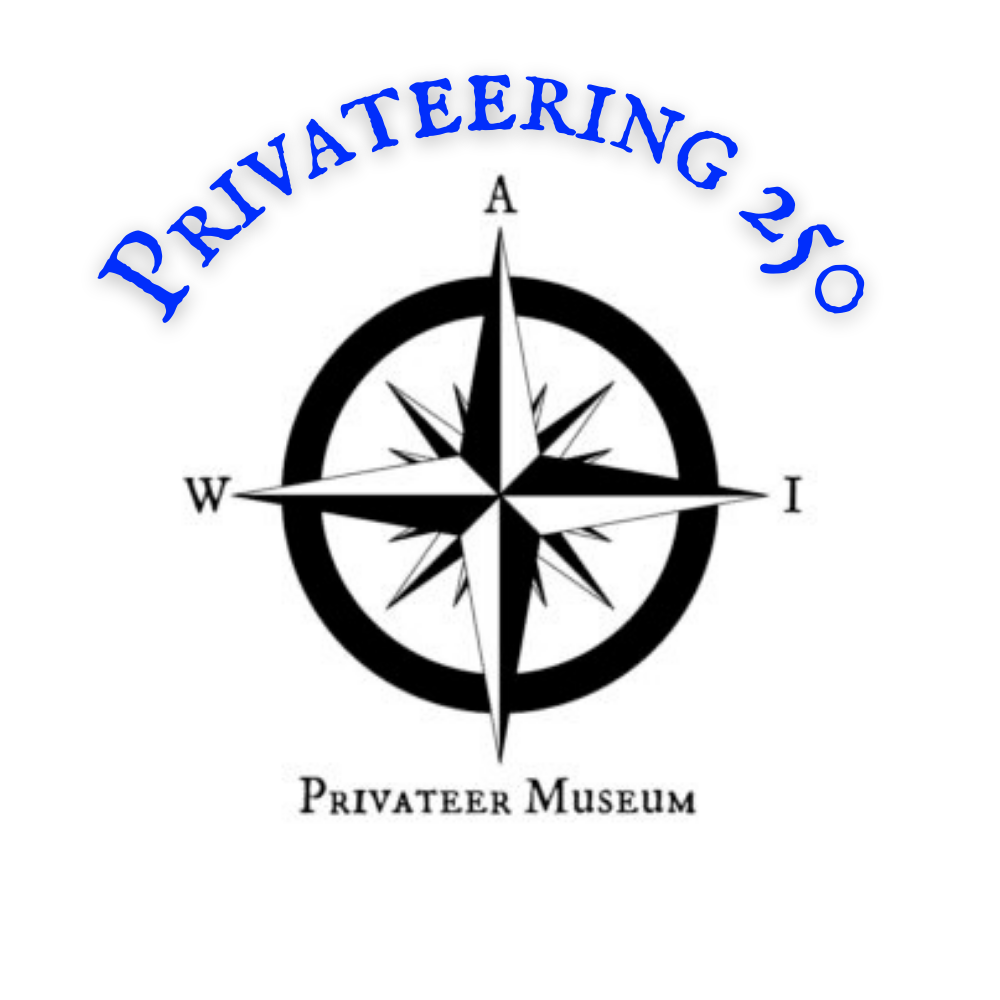
This is where the Captain of any vessel may choose to take in a meal, write correspondence, enter events into the ship’s log, check charts, and conduct other business. At a camp setup such as this, there would be a wide variety of uses for the table.
On the table, you would typically find utensils, candlesticks for light, tankards, pitchers, plates, food, a lap desk, charts, navigation tools, and other things useful to the Captain.


The image to the left shows the Captain at the table conducting business of a sort. The item he is writing on is a Lap Desk.
The lap desk is the equivalent of an 18th-century laptop. It can hold files and writing implements, and is basically his office all rolled into one neat space he can use to write on, then close up and put away when done. It was also called a portable office, writing desk, camp desk, and a plethora of other names and descriptions, not to mention it also had various styles and sizes available at the time depending on one’s station, budget, and preference.
In the image on the right, you will notice a bowl with what looks like round crackers in it. Now known as “hardtack,” which is a 19th-century term coined around the civil war, during the Revolutionary War it was known by other names. Fire cakes were of the most common of names, or simply just “biscuits,” or in our case “ship’s biscuits.” These are definitely not your grandmother’s biscuits from Thanksgiving. These biscuits are made with only 3 ingredients. Flour, a pinch of salt, & a bit of water.

The biscuit was a staple of people on the go. They have no nutritional value, but it was an ingenious way to transport flour on the go, or in damp conditions. They had the potential to break teeth (hence the 19th-century name), and were often ground up and put into soup to thicken it up, or softened in tea and eaten that way. Biscuits when digested or added to water thickened up over time and expanded. so people could eat it as is and they wouldn’t be concentrating on a rumbling belly while on the move. It also made smaller meals go farther to feed more people with less.
